Vertiport Downwash Solutions: Skyportz Patented Vertipad Technology Australian vertiport developer Skyportz has unveiled an innovative patent that addresses one of the most significant obstacles facing urban air mobility: the powerful and potentially dangerous airflows generated by eVTOL (electric Vertical Take-Off and Landing) aircraft. Released at the Avalon International Airshow in Melbourne, this innovative approach effectively manages the downwash and outwash effects, having the potential to change the game for aerial transportation in cities.
|
Electra Secures 2,200 Pre-Orders for EL9 Ultra Short hybrid-electric Aircraft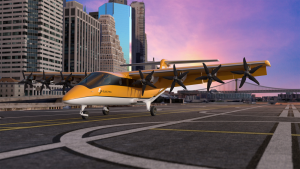 Electra.aero has secured 2,200 pre-orders for its innovative EL9 Ultra Short hybrid-electric aircraft, valued at nearly $9 billion. This development positions Electra with one of the largest order pipelines in the emerging AAM sector, demonstrating substantial market confidence in their creative approach to regional air transportation. The company's technology combines blown lift aerodynamics with hybrid-electric propulsion to create an aircraft capable of taking off and landing in extremely short distances. This could significantly transform how people and cargo are transported between locations currently underserved by traditional aviation.
|
Advanced Air Mobility in Australia 2025 This whitepaper outlines Wisk's vision for integrating autonomous Advanced Air Mobility (AAM) operations into Australia's transportation ecosystem. It covers Wisk's approach to autonomous aircraft operations, regulatory considerations, key use cases, and the potential benefits of AAM for urban and regional mobility in Australia. The document emphasizes safety, scalability, and collaboration with regulators and communities to enable AAM adoption.
|
Digital Twins in Business Aviation: Virtual Fleet Management Digital twin technology has emerged as an innovative solution for modern fleet management, offering unprecedented opportunities to transform how business aircraft are operated, maintained, and optimized. By creating virtual replicas of physical assets that update in real-time, operators gain deeper insights, improve efficiency, and reduce costs in previously unthinkable ways.
|
The Pilatus PC-24: Switzerland’s Versatile Super Light Jet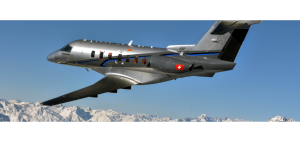 The Pilatus PC-24 combines a turboprop’s versatility with a light jet’s performance. Dubbed the “Swiss Army Knife” of private jets, this remarkable aircraft has carved out a unique niche in the aviation market since its introduction.
|
Business Aviation's Role in the Multi-Modal Future: With Strategic Action Plan The aviation industry is rapidly evolving beyond traditional transportation paradigms, with multi-modal integration emerging as a key strategy for enhancing efficiency, accessibility, and sustainability. This shift presents challenges and opportunities for business aviation professionals to reimagine how private air travel fits into the broader transportation ecosystem. The partnership between Delta Air Lines and Joby Aviation offers valuable insights for business aviation operators seeking to position themselves advantageously in this changing landscape.
|
SkyDrive Achieves JCAB G-1 Certification Basis for eVTOL Aircraft.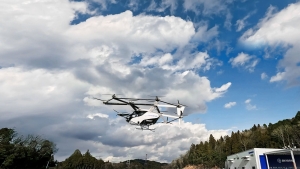 In a major achievement for the Japanese electric vertical take-off and landing (eVTOL) industry, Japan-based SkyDrive Inc. announced on February 10, 2025, that the Japan Civil Aviation Bureau (JCAB) had issued a G-1 certification basis for its flagship eVTOL aircraft. This pivotal achievement represents a crucial step in SkyDrive's journey toward full aircraft certification and commercial operations, positioning the company at the forefront of Japan's emerging urban air mobility sector.
|
The Global Low-Altitude Economy, Q1 2025: Strategic Initiatives and Key Developments The low-altitude economy, encompassing economic activities within airspace below 1,000 meters, experienced remarkable growth in Q1 2025. This rapidly evolving sector, driven by advancements in cargo delivery, urban air taxi services, and medical transport, has gained momentum in China, where it has been officially designated as a strategic emerging industry with significant national investment. Over the past 45 days, China’s institutional reforms solidified its leadership position, Europe accelerated regulatory harmonization, and North America advanced urban air mobility integration. Concurrently, technological breakthroughs in battery technology and vertiport infrastructure have reached critical maturation points, enabling operational scalability across global markets. This report analyzes these key developments and their implications for the future of aerial mobility.
|
|
|
Beyond Aero's BYA-1: The Future of Zero-Emission Business Aviation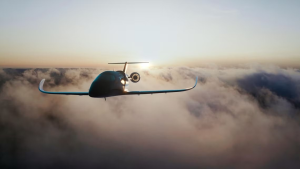 Beyond Aero, a French startup founded in 2020, is developing a hydrogen-electric business jet, the BYA-1 (also referred to as "One"). Designed as a clean-sheet aircraft optimized for hydrogen propulsion, the BYA-1 aims to decarbonize private aviation without compromising performance or luxury. With a targeted entry-into-service date before 2030, This concept aircraft represents a potential contribution to zero-emission air travel.
|
When Is Chartering a Private Jet Worth It? Evaluation of Cost and Convenience of Private vs Commercial travel Chartering a private jet represents a significant financial investment, but its value proposition extends far beyond luxury. Private aviation offers unparalleled flexibility, productivity, and operational convenience for businesses, high-net-worth individuals, and those prioritizing time efficiency. This report will evaluate when private jet chartering becomes a strategically justified choice. Key findings include hourly charter rates ranging from $1,800 to $14,000, time savings of 6–10 hours per trip compared to commercial flights, and enhanced accessibility to over 5,000 airports globally. The decision to charter vs flying commercial hinges on factors such as group size, travel frequency, itinerary complexity, and the economic value of time saved.
|
Utah Advanced Air Mobility Infrastructure and Regulatory StudyThis report explores advanced air mobility (AAM) development and implementation in Utah. It identifies current state assets and required infrastructure and proposes a phased implementation timeline. The report also discusses financing options and legislative considerations necessary to support AAM operations.
|
|
|
PiperJet Altaire the original Single Engine VLJ6136thumb300x300.jpg) The PiperJet Altaire was Piper Aircraft's ambitious entry into the very light jet (VLJ) market, designed to combine a single-engine turboprop's efficiency with a business jet's performance. Targeting a maximum cruise speed of 360 knots and a range of 1,300 nautical miles, the Altaire promised a spacious cabin for up to six passengers, advanced avionics, and competitive operating costs. Despite hitting technical milestones and securing over 150 pre-orders, the project was indefinitely suspended in 2011 due to rising development costs and weak market projections for light jets. Piper preserved the Altaire's intellectual property, leaving a legacy of innovation cut short by economic realities.
|
Vertiport Planning & Zoning: Integrating eVTOL operations in dense urban areas Advanced Air Mobility and Electric Vertical Takeoff and Landing (eVTOL) aircraft will redefine urban mobility by offering point-to-point aerial transportation. However, their integration into densely populated areas will demand careful planning across three related disciplines: flight corridor design, acoustic impact mitigation, and community acceptance.
|
ZeroAvia’s Electric Propulsion System Powers Jetcruzer 500E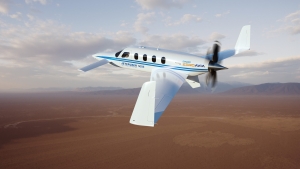 ZeroAvia’s innovative 600 kW electric propulsion system (EPS) has found its first customer in Jetcruzer International, marking a significant step in commercializing hydrogen-electric aviation. This partnership aims to integrate ZeroAvia’s technology into the Jetcruzer 500E, a six-seat hydrogen-electric aircraft targeting entry into service by 2028.
|
Vertiport Power Demands and Grid Infrastructure Realities The future of advanced air mobility (AAM) relies on groundbreaking eVTOL aircraft and robust and innovative power infrastructure. Vertiports, the hubs for these electric aircraft, face significant energy challenges as they transition from concept to commercial operation.
|
Texas Report and Recommendations of the Advanced Air Mobility Advisory Committee The Texas Advanced Air Mobility (AAM) Advisory Committee, established under Senate Bill 2144 (2023), authored this report to guide legislative action for integrating AAM technologies—including drones and electric vertical take-off and landing (eVTOL) aircraft—into Texas' transportation ecosystem. The report outlines economic, societal, and environmental benefits, identifies challenges, and provides a
|
Oklahoma Advanced Mobility Strategy The Oklahoma Advanced Mobility Strategy outlines the state’s roadmap to lead in advanced mobility technologies, including drones (UAS), autonomous vehicles (AVs), and advanced air mobility (AAM). It emphasizes economic growth, workforce development, infrastructure modernization, and public-private partnerships to position Oklahoma as a national hub for innovation in transportation. Key focus areas include safety, sustainability, and equitable access to mobility solutions.
|
NASA’s Sulfur Selenium solid-state battery Technology Impact on eVTOL Aircraft Development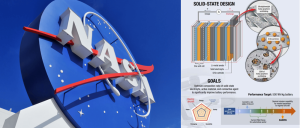 The introduction of NASA’s sulfur selenium solid-state battery is a game-changer in the quest for sustainable aviation. This innovation, spearheaded by the agency’s Solid-state Architecture Batteries for Enhanced Rechargeability and Safety (SABERS) project, addresses critical challenges in energy storage, safety, and performance for electric aircraft. By redefining the capabilities of battery technology, this breakthrough can accelerate the adoption of Advanced Air Mobility (AAM) and electric vertical takeoff and landing (eVTOL) systems.
|
|